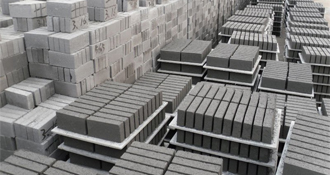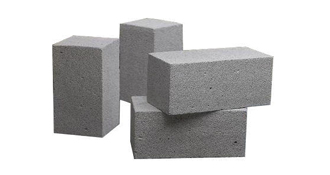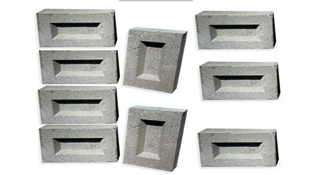
Fly ash brick (FAB) is a building material,
specifically masonry units, containing
class C or class F fly ash and water.
Compressed at 28 MPa (272 atm) and
cured for 24 hours in a 66 °C steam bath, then toughened with an air entrainment
agent, the bricks last for more than
100 freeze-thaw cycles. Owing to the
high concentration of calcium oxide in
class C fly ash, the brick is described as
"self-cementing". The manufacturing
method saves energy, reduces mercury
pollution, and costs 20% less than
traditional clay brick manufacturing.
The raw materials
Gypsum acts
as a long term strength gainer. The
chemical reaction due to the aluminum
paste provides AAC its distinct porous
structure, lightness, and insulation
properties, completely different
compared to other lightweight concrete
materials. The finished product is a
lighter Block - less than 40% the weight
of conventional Bricks, while providing
the similar strengths.
1) Loss on Ignition (LOI); fly ash loses
weight when it burns at about 1000 °C
due to presence of carbon and water.
The weight loss happens due to carbon
combustion and moisture evaporation is
called "Loss on Ignition(LOI)". This is
expressed as percentage. The lower the
loss of Ignition, the better will be fly ash.
As per BIS it should not be more than 5%.
2) Fineness; the fine fly ash has more
surface area available to react with lime,
thus more will be the pozzolanic activity
of fly ash. The greater pozzolanic activity
contributes to the strength of fly ash brick. As per BIS it should not be more
than 320 m2/kg.
3) Calcium (CaO) content; the pozzolanic
reactivity of fly ash is more in high
calcium fly ash. The greater the
pozzolanic activity leads to higher the
strength of fly ash brick. As per ASTM
C618 fly ash is classified into two; Class
C contains more than 10% lime and
Class F fly ash contains less than 10%
lime.
Advantages
It reduces dead load on structures due
to light weight (2.6 kg, dimension: 230 mm X 110 mm X 70 mm).
Same number of bricks will cover more area than clay bricks
High fire Insulation
Due to high strength, practically no breakage during transport and use.
Due to uniform size of bricks mortar required for joints and plaster reduces almost by 50%.
Due to lower water penetration seepage of water through bricks is considerably reduced.
Gypsum plaster can be directly applied on these bricks without a backing coat of lime plaster.
These bricks do not require soaking in water for 24 hours. Sprinkling of water before use is enough.
Disadvantages
Mechanical strength is low, but this can be rectified by adding marble waste or mortar between blocks.
2. Limitation of size. Only modular size
can be produced. Large size will have
more breakages.
3. It is only good for the places like
subtropical area or area where climate is
warm because it doesn't absorbs heat.
But during cold it is not helpful.



